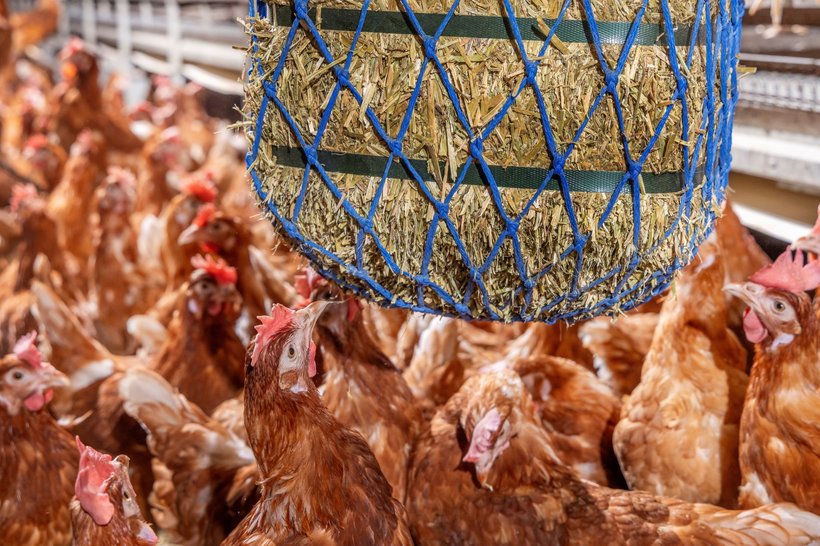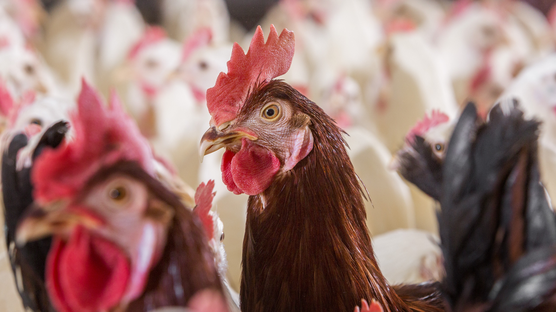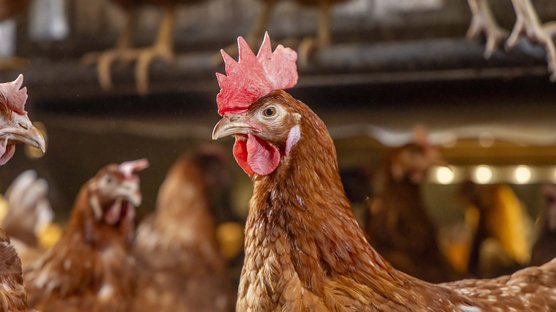
Published on July 16, 2025
Management and Other Differences of White vs. Brown Laying Hens
For several decades, the egg market across much of Europe has been dominated by a preference for brown-shelled eggs. However, the growing recognition of animal welfare, the transition from cage to cage-free housing systems for laying hens, and the increasing focus on sustainability and carbon footprint calculations have opened the door to the greater utilization of white laying hens in some countries that traditionally preferred brown eggs.
While one could speculate about the pros and cons of each type of egg layer, considering the biological production potential of white versus brown chicken breeds, it seems that the main driver will still be the consumer’s preference for a particular eggshell color, despite the fact that the shell is not consumed.
Egg producers have realized that a different approach to management practices is necessary when switching between brown and white laying hens. These practices are usually informed by experience, tips spread within the poultry community, and sometimes sheer luck. One apparent difference is the plumage color of the commercial laying hens, resulting from the different genetic backgrounds of the breeds used in industrial egg production—white hens coming from various lines of White Leghorns, and brown hens from a combination of Brown and White Rhode Island lines. Consequently, white and brown laying hens have different temperaments, leading to different behaviors.
Egg producers quickly recognize that they must be more prudent when entering and working in the house with white laying hens, which typically do not "come to welcome them" as brown laying hens often do. Although day-old chicks of both types are curious and tend to approach when "called," white hens usually reverse this behavior as they grow, often trying to escape when someone enters the house. The first week of life can be more challenging when starting with a flock of white egg layer chicks. It is often recommended that the starting temperature for white chicks be 2-3°C higher than for brown chicks, at least for the first few hours. Monitoring the cloaca temperature of the young chicks and adjusting the environmental temperature based on these measurements is strongly advised. Once they are well started, white laying hens tend to explore their environment better and faster and are easier to manage towards the end of the rearing period. However, it is important to note that white laying hens are more sensitive to pecking between 3 and 7 weeks of age, requiring full attention from the rearing farmer during this critical phase. In contrast, brown laying hens are sometimes considered lazier and less inclined to seek out equipment, feed, and water.
Some egg producers mistakenly believe they can house more white than brown day-old chicks, pullets, or laying hens on a given surface, assuming the lower body weight of white hens allows for this. This is incorrect and should not be practiced. To provide the best possible conditions for development and growth during the starting period, the same standards for stocking density, feed and water space, and ventilation per individual should be maintained for both white and brown chicks.
Feed and water
Easy and comfortable access to feed and water is essential throughout the chickens' lives, regardless of feather color. However, if laying hens play with water and spill it (as whites are sometimes accused of doing), steps should be taken to manage this behavior. High light intensity is generally recommended and applied during the first weeks of life to stimulate activity in the laying hens, with no standardized differences for white or brown hens. If activity seems too high or nervousness increases, dimming the light is usually an effective way to calm the hens. For laying hens prepared for a cage-free environment, particularly those intended for free-range systems later on, higher light intensities are recommended to avoid stress from a sudden increase in light intensity when they move from the controlled environment of the house to the winter garden or range during rearing or transfer.
The recommended lighting program does not need to differ significantly between white and brown laying hens. If necessary, it can always be adjusted according to rearing goals, achieved body weights, and production type, which may have different egg weight requirements. Brown laying hens in cage-free systems might need longer day lengths to avoid laying eggs outside nests, especially since it may still be dark in the early morning when they start to lay. White egg layers tend to start laying about two hours later than brown hens. This difference in laying patterns also leads to different recommendations for the ratio of coarse to fine particle size calcium carbonate, with 70:30 recommended for brown hens versus 50:50 for white hens. If housing both types together, it is recommended to maintain the 70:30 ratio.
As mentioned earlier, no less feeding and drinking space is required or recommended for white laying hens compared to brown ones during rearing and production. The aim is to provide both types with the best possible development during rearing and the start of lay, using well-balanced feed in the right amounts. The main factors to monitor are body weight and flock uniformity. High-quality crumbled feed at the start should transition to good quality mash feed of appropriate structure, which, combined with proper feeding management, can produce a uniform flock of high-quality pullets—the main goal of a reliable pullet rearer.
Despite different body weight growth requiring different amino acid and metabolizable energy (ME) intake for white versus brown hens, egg producers often successfully use the same feed for both types housed together. The key parameter to monitor is standard body weight and flock uniformity. Often, uniformity achieved with white hens is 5 to 10% higher than with brown hens. Brown hens generally consume around 1,200 kcal more per pullet than white hens from day-old until the point of lay, and this difference persists across various housing systems.
Proper feed distribution management is crucial for the development of the gastrointestinal tract. Good physical feed structure and correctly applied "empty feeder" techniques support the development of both white and brown pullets, preparing them for the necessary fast increase in feed intake at the start of lay.
As mentioned before, brown hens are heavier compared to white hens, leading to higher maintenance and total ME requirements throughout their lifespan. The higher average daily ME requirement for white hens versus brown increases, especially at the end of lay, due to their higher production rate and laying persistency. White hens typically achieve a lower feed conversion ratio (FCR) per egg or kilogram of egg mass, requiring less feed to produce white eggs compared to brown ones. Higher laying persistency towards the end of production is one of the main reasons for extending the production cycles of white hens. White egg layers also produce fewer eggs with meat and blood spots compared to brown hens, a trait generally well accepted. White hens are better able to maintain eggshell quality up to levels required by egg packers, partly due to their more consistent egg weight curve.
Behavior and Environment
When listing the differences between white and brown hens, it is important to note that white hens are generally considered easier to manage in cage-free systems. They move more easily in aviaries and tend not to crowd or smother as much as brown hens do, which is often cited as a reason for their higher use in cage-free systems. They also tend to produce fewer eggs outside nests, provided the litter layer is kept shallow. A significant difference between white and brown layers is that with white hens in alternative systems, it is important to keep the litter quantity low to avoid triggering floor egg production. White hens rarely produce floor eggs, but they can start to do so if there is too much litter. Brown hens, once they begin laying in nest boxes, are less likely to be triggered to lay eggs on the floor.
Due to their more active temperament, visits and treatments of white flocks should be carried out with special attention to their behavior. Additionally, the oviposition time of white hens is more concentrated compared to brown hens, creating a higher demand for nest space. Therefore, nesting space recommendations must be followed even more strictly for white hens than for brown hens. Our overall advice is to never save money on nest space, as competition for nests should be avoided.
Best practices advice
In conclusion, while there are distinct differences in the management, behavior, and production characteristics of white and brown laying hens, these factors must be carefully considered by producers when choosing between the two. The unique needs of each type of hen—ranging from environmental conditions and feed management to behavioral tendencies and egg production patterns—require tailored approaches to ensure optimal health, productivity, and welfare. However, despite these technical considerations, the ultimate decision for egg producers will likely continue to be influenced by consumer preference for eggshell color. As such, producers must balance the practical aspects of hen management with market demands to achieve successful and sustainable egg production.



